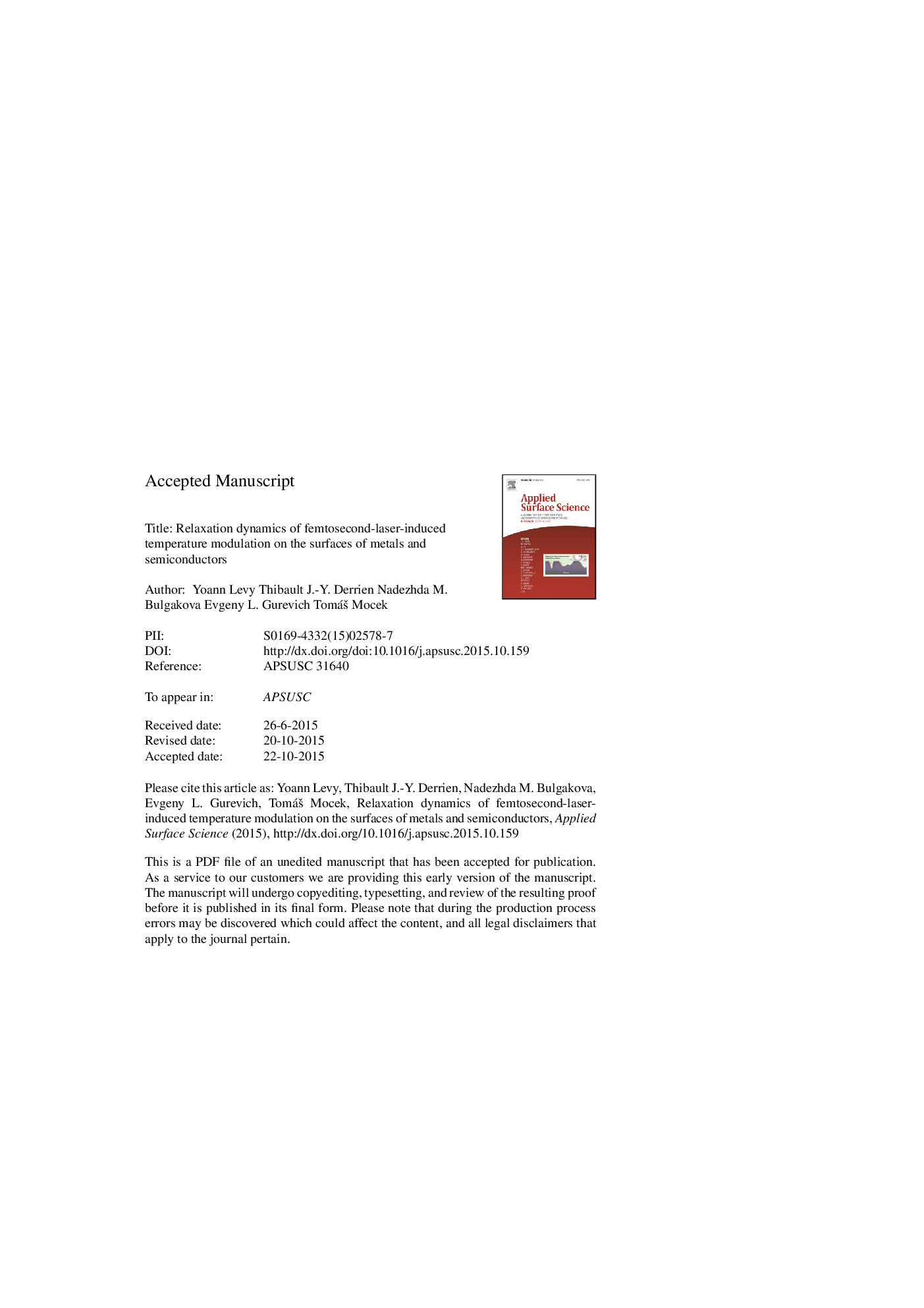| Article ID | Journal | Published Year | Pages | File Type |
|---|---|---|---|---|
| 5352523 | Applied Surface Science | 2016 | 31 Pages |
Abstract
Formation of laser-induced periodic surface structures (LIPSS) is a complicated phenomenon which involves periodic spatial modulation of laser energy absorption on the irradiated surface, transient changes in optical response, surface layer melting and/or ablation. The listed processes strongly depend on laser fluence and pulse duration as well as on material properties. This paper is aimed at studying the spatiotemporal evolution of a periodic modulation of the deposited laser energy, once formed upon irradiation of metal (Ti) and semiconductor (Si) surfaces. Assuming that the incoming laser pulse interferes with a surface electromagnetic wave, the resulting sinusoidal modulation of the absorbed laser energy is introduced into a two-dimensional two-temperature model developed for titanium and silicon. Simulations reveal that the lattice temperature modulation on the surfaces of both materials following from the modulated absorption remains significant for longer than 50Â ps after the laser pulse. In the cases considered here, the partially molten phase exists 10Â ps in Ti and more than 50Â ps in Si, suggesting that molten matter can be subjected to temperature-driven relocation toward LIPSS formation, due to the modulated temperature profile on the material surfaces. Molten phase at nanometric distances (nano-melting) is also revealed.
Keywords
Related Topics
Physical Sciences and Engineering
Chemistry
Physical and Theoretical Chemistry
Authors
Yoann Levy, Thibault J.-Y. Derrien, Nadezhda M. Bulgakova, Evgeny L. Gurevich, TomáÅ¡ Mocek,
